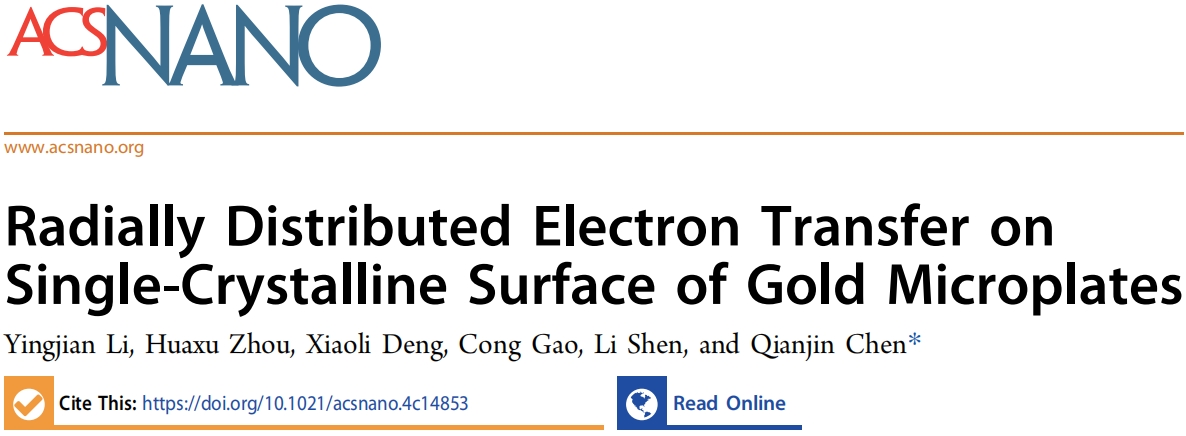The research team led by Professor Chen Qianjin from the College of Chemistry and Chemical Engineering at DHU has published new results in single-entity electrochemistry. Recently, the team published a paper titled Radially Distributed Electron Transfer on Single-Crystalline Surface of Gold Microplates in the internationally renowned journal ACS Nano. Li Yingjian, a master's student from the 2021 cohort, and Zhou Huaxu, a doctoral student from the 2022 cohort, are the co-first authors of the paper, while Professor Chen Qianjin is the corresponding author, with DHU as the only corresponding institution.

Electron transfer is ubiquitous in many chemical reactions and biological phenomena; however, the spatial heterogeneities of electron transfer kinetics in electrocatalysis are so far insufficiently resolved. Measuring and understanding the localized electron transfer are crucial to deciphering the intrinsic activity of electrocatalysts and to achieving further improvements in performance. By using scanning electrochemical probe microscopy to spatially resolve redox electrochemistry across the single-crystalline surface of gold microplates, we discover an intriguing radially distributed electron transfer pattern, where the kinetics around the periphery region are significantly higher than those at the central region, regardless of the redox reaction types. In combination with atomic force microscopy-based infrared spectroscopy for synergistic interrogation of local chemical heterogeneities, we deduce that such a radial pattern of electron transfer originates from the uneven distribution of passive adlayer across the microplate surface. Subsequently, we verify that the spatial heterogeneity of electron transfer can be eliminated by removing the surface adlayer by either mild room temperature aging or oxygen plasma exposure. In addition to gaining insight into the spatial heterogeneities of electron transfer at the nanoscale, our work highlights the important effect of adsorbed organic species at nanocrystal surfaces on electrocatalysis.
